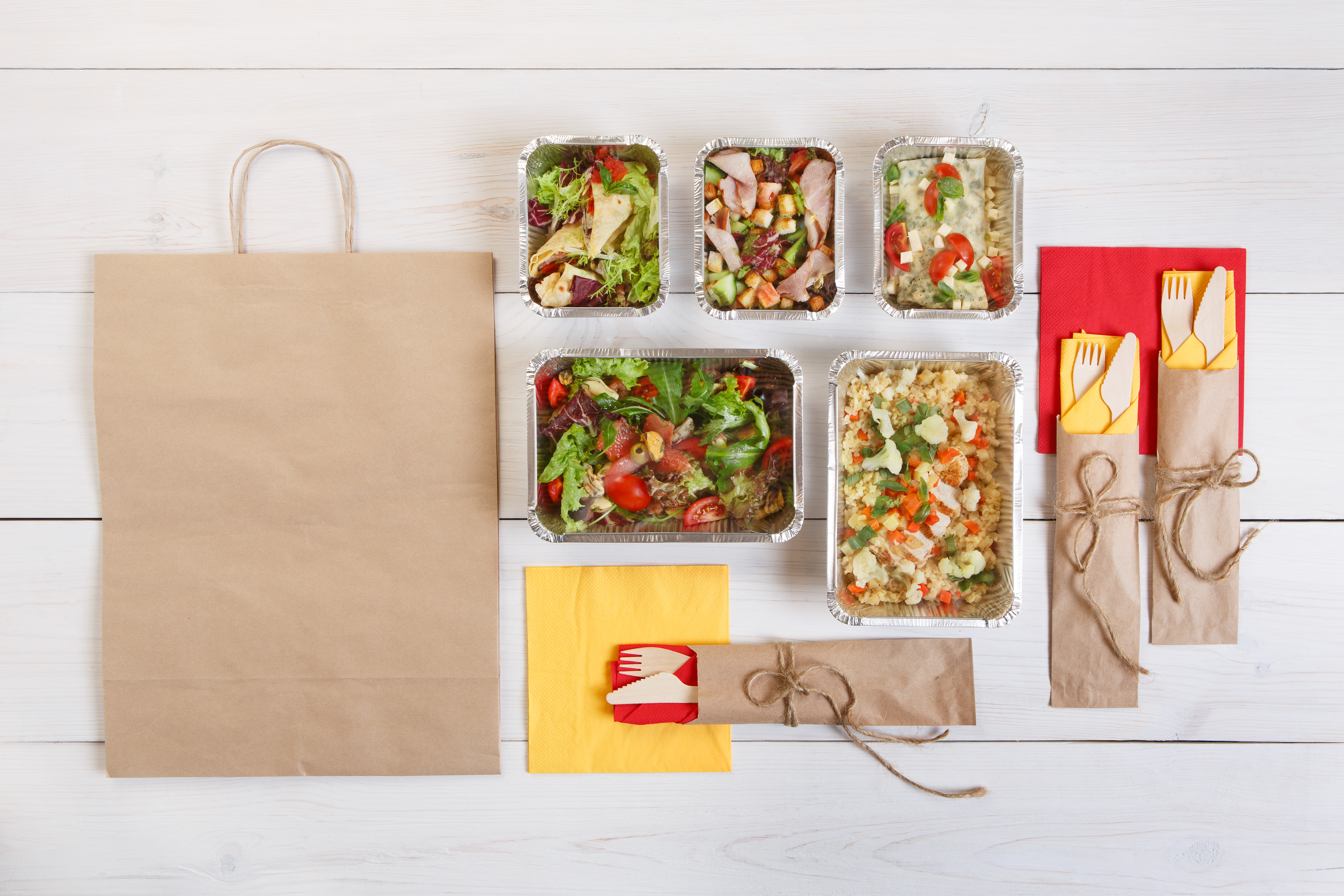When you’ve spent years building up a business, with long days, sleepless nights, and your mind forever racing thinking of ways to grow and optimize, the idea of starting again from scratch can bring up strong feelings of resistance. But when things suddenly change, as they have with the current Covid-19 situation, you have to put those feelings aside and take positive action to transition to a model that suits the times.
Lockdown or no lockdown, people need to be fed.
With revenue for many shared kitchen operators and tenants wiped out by mass cancellations and closures, we’ve had a lot of requests for advice on transitioning to a different model.
We’ve seen some truly inspiring stories of swift action taken, where shared kitchen owners and tenants quickly pivoted to set up grocery stores, offer meal-kits, and deliver meals to healthcare workers among many other initiatives.
Two common themes are food businesses transitioning to online ordering for delivery or curbside pickup, and others turning to an ecommerce model. So we’ve endeavored to collect all the best information and give you some helpful tips to change up your game.

Transition to Food Delivery or Ecommerce
Food businesses across the country and the world have been forced to jump into a delivery-only model out of necessity as Covid-19 lockdown forces people to stay at home. Artisan producers, bakers, and caterers are also struggling with events and farmer’s markets not taking place, so many are looking to online channels and setting up ecommerce stores to sell their products.
The important thing is to think about the best way your particular business can pivot. How can you use existing resources to offer something relevant to the situation? A good example is distillers producing hand sanitizer during Covid-19 as they already have much of the equipment and access to ingredients needed to easily make the switch.
Whatever you decide to do, the first step is to activate communication channels with your customers to let them know what’s going on. Update your website and social media profiles, and whether you use email, social media, or good old fashioned direct mail to let them know, make sure you open up two-way communications so information can flow both ways.
Let’s take a look at the fundamentals you must put into place to make your transition a success.

Delivery
Create a Streamlined Delivery Menu
Your delivery menu needs to be focused and full of favorites. Offer high margin dishes that your most loyal customers love. Build your menu around what your best customers repeatedly order and optimize it for maximum efficiency. You’ve got to watch the margins because the delivery costs will eat into your profit.
Think about what will transport well and how you can modify your most popular dishes so that the customers have the best possible experience at the other end. Separate hot elements from cold, for example, and use appropriate packaging to keep the food at its best in transit.
Other considerations are driver insurance, rigorous hygiene guidelines, and offering contactless deliveries. These are all things to bear in mind to give the customer peace of mind and overcome any barriers stopping them from placing an order.
Delivery Logistics
There are two options with delivery. Go it alone, or use a third-party service. If you can offer your own delivery service, you can protect your margins but you have to deal with logistics. Going with a third-party is super convenient but comes with its own cons. More on that below.
Hiring your own drivers is a way to boost the local economy. And keeping things in-house also allows you to keep control of your guest relationships and data for future use in marketing. Very handy for quickly getting back to normal once the lockdown is over.
If you can come together as a whole and utilize any vehicles your tenants have or staff that are looking for work, that’s a great way to maintain control and give the local economy a boost.
Be mindful of the extra costs. You may have to charge a delivery fee but consider offering free delivery for a minimum order amount. Or a special offer of free delivery on second or thirds orders.

Online Ordering
Whatever you decide, you need to act fast and get your online ordering and up and running as quickly as possible. You can take orders online, by phone, email, or even text message. But you better make sure you’ve got a system in place to keep on top of it in one place.
With restaurants closed up and down the country, tech companies that supply POS, reservations, marketing, and other software platforms, have quickly launched their own ordering platforms. The good news is a lot of them are offering subscriptions for free, or at a discount – for now. So it’s a good time to take advantage of these offers and get yourself set up with online ordering.
- Reservations and marketing platform Sevenrooms has launched a direct ordering platform to help food businesses organize their online orders in one place and offer their own delivery service.
- Toast, which supplies POS systems and restaurant management software, has set up Toast Now, an app that helps with ordering, contactless delivery, and selling e-gift cards.
- Restaurant management system Upserve is offering its new ordering platform free for 12 months.
- If you don’t already have a website, a service like ShopBlocks helps you set up a basic website to show your menu and allow online ordering.
Third-party Delivery Platforms
The quickest and easiest way to get up and running with delivery is to use one of the third-party delivery platforms. You don’t have to worry about your own ordering system or delivery logistics and you have access to a large pool of hungry customers. In fact, 63% of young adults use third-party delivery apps.
However, this also means you are directly competing with hundreds of other restaurants and food businesses. You’re also handing over a key part of the customer experience to an untrusted partner. There are plenty of horror stories of orders arriving cold, damaged, or even incomplete. And it’s not just the drivers taking a bite out of your offering, these platforms can charge anywhere up to 30% commission on orders, eating into your already tight margins.
There’s been a fair bit of press about these platforms taking advantage of vulnerable restaurants during this time, with some cities capping delivery fees. Whatever you make of that, it’s a convenient option and you’ll just have to weigh up the pros and cons.
The big players in third-party delivery include Postmates, Doordash, UberEats, Caviar, and GrubHub. It’s easy to get started by heading to their websites and starting an online profile.
Ecommerce
Online grocery and alcohol sales are soaring during Covid-19 and many are predicting the trend to endure in the post-Covid world. According to a recent survey conducted by Brick Meets Click, grocery sales for home delivery and pickup in April 2020 reached a record $5.3 billion, a 37% increase over March sales.
If you sell a niche product, it’s a great opportunity to reach your customers at a time when a lot of people are purchasing online and the ecommerce giants are overwhelmed with orders.
Even if you’re a caterer or run a food truck and you feel as though you don’t have a product to sell, there are ways to adapt your cooked offering to a retail product. Given that you have the suppliers and kitchen space, why not start to offer meal kits for consumers to cook at home. Add a step-by-step recipe for your signature dish and provide all the ingredients needed to make it at home. You can also offer vouchers to generate cash that can be redeemed when things get back to normal.

Create an Online Store
Websites like Squarespace and Wix allow you to set up an online store in less than an hour (you can refine it more and more as you go along). Shopify is another option that offers templates and guides specifically for food businesses to sell online.
As with delivery, taking control of your own sales platform brings advantages and disadvantages. Setting up an online store is straightforward, but you’ll need good quality images and product descriptions, and you’ll need to set up a way to accept payments and deal with shipping and customer service. More on that below.
Payment Processing
The biggest names in payment processing are Square, Paypal, and Stripe. If you already use Square’s POS or other hardware, it makes sense to stick with them. Otherwise, Paypal and Stripe offer a similar service, take all major credit cards, and charge a small percentage on each transaction.
Distribution
One of the simplest ways to get started is to offer curbside pickup locally. This way you avoid any issues of packing and shipping items all over the country, and help to serve your local community.
You may consider a third-party logistics provider, although again, this will eat into your margins. But it does mean you can quickly get up and running and avoid a lot of the stress and hassle of setting everything up from scratch. Shipstation offers an all-in-one solution to take the hassle out of the shipping and customer service process.
Online Farmer’s Markets
Shared kitchen tenants who have seen the farmer’s markets they rely upon for local sales shut down during the pandemic have been turning to online alternatives. Sites like Kitsap Fresh and Fresh Food Revolution allow you to sell to local consumers online. Consumers then pick up their orders from their chosen location. There are online farmer’s markets operating across the country so get online and find one near you.
We’re Here to Help as You Make Your Transition
We understand how hard it can be to suddenly change your business model but drastic times call for drastic measures. We’re here to support you every step of the way, and we’d love to hear about your challenges so we can offer solutions, and also your success stories.
For more helpful tips, guidance, and support, head to our evolving Covid-19 resources post, and for some inspiration on what other businesses are doing to pivot and make the best of the situation, read our recent post based on our survey results.
Best of luck with your transition and don’t forget to let us know how it goes.


